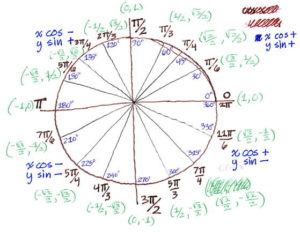A week or so ago I wrote about my bucket list, or at least one item on my bucket list. This week I’m writing about a dream. The dream is to walk on to the bridge of starship and take command. Just like the captains in Star Trek. I would lead the crew on all sorts of adventures: fascinating exploration missions, daring military raids, and heroic rescue missions. I would also (unlike the Star Trek captains, as far as I know) sometimes take the ship out and roam the galaxy just for fun.
Alas, my dream is unlikely to be fulfilled. There are real spaceships, but my chance of going on one of them is on the wrong side of .00000000000001. To put it bluntly, there is no chance at all that’s going to happen. Even if I did take command of the next version of the space shuttle (did I mention that the chances of that happening are ridiculously small?), no one in my lifetime will go to another star system, let alone going beyond Mars. Even going to Mars in the next twenty or thirty years is a long shot.
So what’s an aspiring starship captain to do? Content himself or herself with watching Captain Jameway or Commander Sisko or Captain Archer? Or maybe channel his or her inner child and watch Star Trek inside a suitably decorated refrigerator box? Fun, perhaps, but much too passive for someone who wants to take command and “boldly go where no one has gone before”.
Well, there are some options: games. After all, where books and movies are passive, games are active. And there are some bridge simulation games where players are the bridge crew of a starship.
A week or two ago I played a game called Space Cadets. I actually bought it a year or so ago, but didn’t get around to playing it until recently.
It’s a fun game. As with other bridge simulation games, there are various stations: captain, engineer, weapons, damage control, shields, sensors, jump drive, tractor beam, and helm. Each station has its own mini game. My favorite mini game is the weapons game, which is more or less a mini tabletop shuffleboard game where you slide a wooden disk along a track to see how much damage a torpedo does. It’s a nice risk-reward tradeoff game: you can play it safe and be almost certain you’ll do some damage, or you can gamble and go for a lot of damage with a big chance that you’ll do no damage at all.
All of the mini games are timed, which adds an element of tension, although when I played there were some games that didn’t take much time. Maybe that’s because the engineer (me) didn’t do a good enough job getting power to the other stations. That meant they didn’t have enough power to do things that take more time.
If each of the bridge officers is in her or his own little world, desperately trying to beat the clock and get a sensor lock or get a torpedo loaded, you might have some tension, but to get real excitement you need the players yelling and screaming at each other, and to get that you need connections between stations. In Space Cadets, the engineering station is connected to all of the other stations because the engineer determines how much power each of the other stations receives. The sensors station is connected to the weapons station because torpedoes will do more damage if there is a sensor lock on the target. And if a core breach is imminent, then all of the players have to work together to prevent it while also doing their regular jobs.
The game I played never got to the core breach level, and there wasn’t any actual yelling and screaming, but the connections between stations definitely played an important role. That shows good design of a bridge simulation game.
Have I found my wish-fulfillment game that lets me command a starship? Not yet. Space Cadets is fun to play and is a great game, but it’s not the ultimate starship captain experience.
One issue that I have with it is that some parts of the game can become tedious. I kept thinking “I could write a program to keep track of this”. There is a mobile app for the timer, which is good, but I kept wanting the app to do more, and it doesn’t. Nor should it, really. Computerizing more of the game could make some things less tedious, and it would allow more complicated rules, but it would also change the game a lot and it would lose its party game flavor. I’ll keep Space Cadets, but I’ll also keep looking for my ultimate game.
When we played Space Cadets, we set the stations out on our kitchen counter. The counter is black with lighter flecks in it and it sort of looks spacey. But the rest of the room is just a kitchen and doesn’t look like a space ship at all, even if it does have stainless steel appliances. A living room or a family room wouldn’t be any better. That’s not a problem if you just want to play a game for a couple of hours. But is it possible to get something more immersive? More on that in a later post. (Hint: I’m not talking about VR.)
In the mean time I’ll get out my crayons and paints and aluminum foil and start decorating that refrigerator box.

